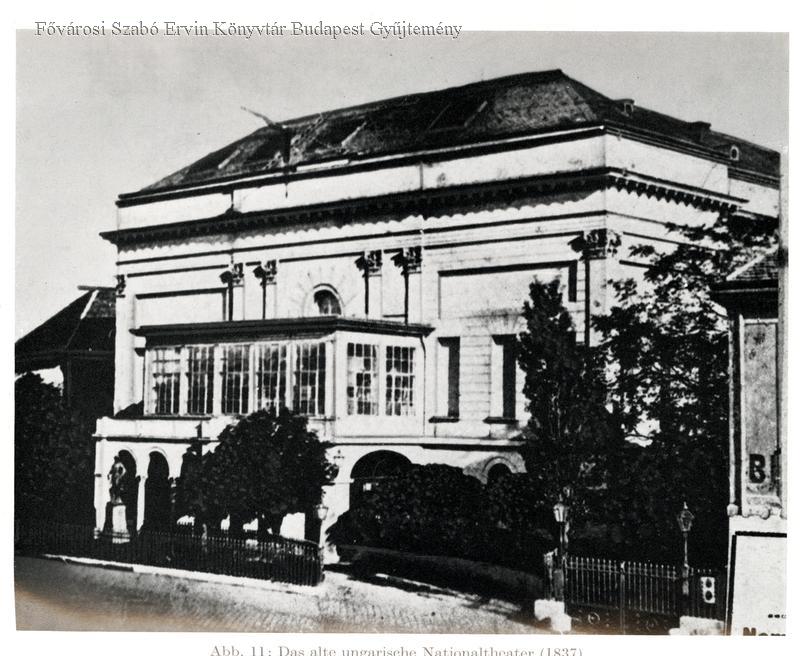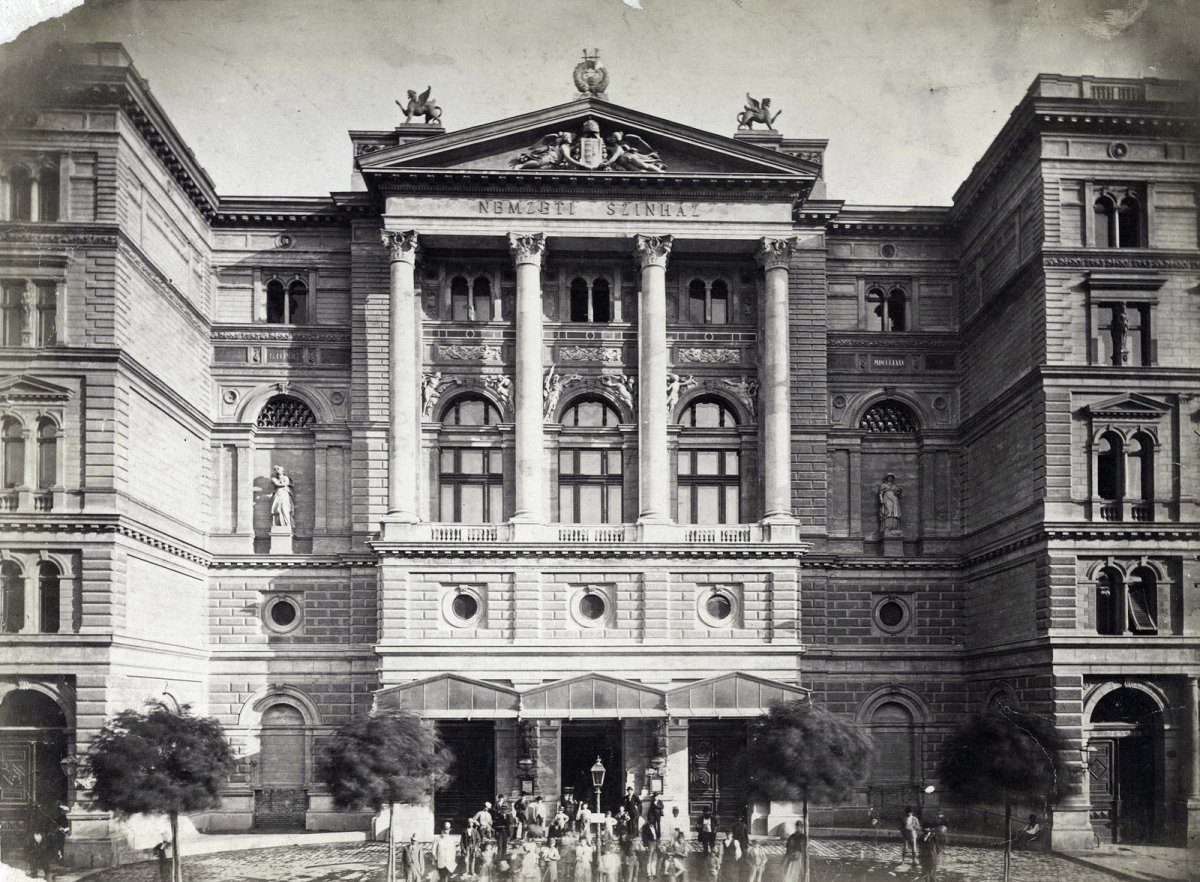"Without a firm foundation, nothing can stand permanently" - this is the beginning of the small pamphlet that was published 190 years ago and was about the establishment of the central location of Hungarian-language theatre in Budapest. In 1832, the work Magyar játékszinrül (About the Hungarian theatre) was written not by one of the leading actors or writers of the time, but by István Széchenyi.
It may seem surprising that Széchenyi also dealt with acting, even though he approached this question in the same way as almost everything else. A permanent Hungarian theatre contributes to the rise of the nation, helps the rise of the city (because he thought about the possibility of building a theatre not only in Budapest or as he writes in his work Magyar játékszinrül: Buda-pest), which affects everything from culture to the economy.

A German theatre operated in a bastion of the old city wall of Pest, but Hungarian-language performances were also held there (Source: FSZEK Budapest Collection)
Why did Széchenyi write this work? In fact, he was asked to do this, because in 1831 the county of Pest established a committee to promote the national language and theatre, and Széchenyi was approached to put his thoughts on paper. At that time, the matter of establishing a permanent Hungarian-language company and theatre in Pest had been on the agenda for nearly 40 years. Before that, Hungarian theatres had already opened in the rural towns, but in Pest only Hungarian-speaking companies played in the basically German theatres. However, there were many efforts, and even from 1807, the issue of promoting Hungarian theatre was on the agenda of the Parliament, and in 1830 a resolution was drawn up about it.
In his pamphlet, Széchenyi formulated what he sees as the cause of previous failures:
"The goal is nothing less and nothing more than to provide our country with the convenience and benefits of the Theatre in general. But has any kind of plan been used to establish this? The object ignited; principle appeared; money was collected, here, there and almost everywhere; hours, days, weeks passed: but there was no unifying plan, centralizing cohesive system; and this is why, precisely why there is no and will not be real success anywhere.”
In the short work of barely 100 pages, he explains in detail how a theatre could be established in such a way that it would operate permanently and on a secure basis. In fact, he proposed a whole network, but above all, he thought that first a theatre in Budapest should be set up with a solid background, and then they could expand in the other cities:
""I claim that, although in the larger and smaller places of our country, a company of actors may live and work with more or less good fortune for several centuries from now; but no uniform theatrical success will ever develop in Kassa, Miskolc, Pécs, or any notable place in the country, no matter how many centuries, until a proper, indestructible, theater, is established in Buda-Pest."
However, in addition to the central location, he considered it important to create a secure financial base: the money must be properly allocated, and the theatre must be managed by the right person. He imagined the money in the form of a joint-stock company, where 500 HUF shares could be subscribed, a maximum of 400 in total. The 400 shareholders would have elected the 7-member committee - who would only stay until the theatre building was erected, after which they would elect 3-4 supervisors - and the director. Half of the collected 200,000 HUF would have been given out at fixed interest, and the theatre would have started operating with the other half. Széchenyi thought that the theatre building did not have to be big and magnificent, in his work he argued at length against the immediate construction of a huge, ornate building, he thought that an attractive and adequate house, which was also cheaper to maintain, was enough.

The Hungarian Theatre of Pest, which opened in 1837 and stood on today's Rákóczi Road, at the corner of Múzeum Boulevard, the picture was taken before its reconstruction in 1875 (Photo: FSZEK Budapest Collection)
For the location, he suggested József Square on the banks of the Danube, which is now József Nádor Square, which he found to be the most suitable, while, for example, the vicinity of Kecskemét Gate - today's Kálvin Square - seemed to be the worst choice.
Széchenyi's pamphlet stirred up the standing water, and preparations for the establishment of a permanent Hungarian theatre really began. The Parliament discussed the proposal in 1836, but it failed by one vote, because at that time the construction of the Hungarian Theatre of Pest was already under way, and at the time of its foundation they followed a completely different path than the one proposed by Széchenyi. The biggest dispute was in choosing the location. The count suggested the Danube bank, but in the end the theatre was moved elsewhere in 1837, in the suburbs. Not at the Kecskemét Gate, but at the Hatvani Gate, which is not much better situated - which was no longer stood, but the area was still part of the suburbs - i.e., it opened at today's Astoria, at the corner of Kerepesi Road (today Rákóczi Road) and Országút (today Múzeum Boulevard).
Cover photo: The National Theatre after the reconstruction in 1875. The theatre was closed in 1908 (Photo: Fortepan, Budapest Archives, Reference No.: HU.BFL.XV.19.d.1.05.083)



































